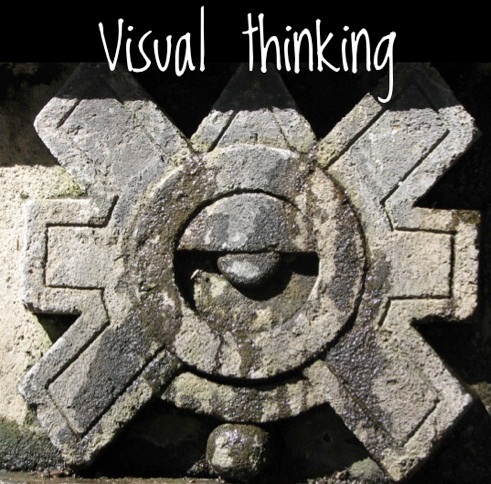Adapting to visual content: 3 musts for the SEO copywriter
 With each new photo-friendly social network (and updates to existing networks to make images look even better), I cringe a little. There was a time when the best way to get your message across online was through some high quality, optimized text. As writers, we were kings and queens among content creators.
With each new photo-friendly social network (and updates to existing networks to make images look even better), I cringe a little. There was a time when the best way to get your message across online was through some high quality, optimized text. As writers, we were kings and queens among content creators.
But now the tide is shifting. The web has become, for many, a primarily visual experience. Here’s some food for thought:
- 40% of people respond better to visual information than plain text. (Zabisco)
- On Facebook, photos perform best for likes, comments and shares. (Dan Zarella)
- Pinterest generated more referral traffic for businesses than Google+, LinkedIn and YouTube. (PriceGrabber)
(stats courtesy of Hubspot)
So what is the SEO content writer to do? It’s time to adapt. You can’t deny the power of images, and if you want your clients to reach their business goals through marketing you need to offer what is best.
Text is still important – but smart content writers need to make some strategic moves to stay on top of what clients (and search engines) are looking for.
Here’s how to do it:
1. Think strategist instead of writer.
Many copywriters and content creators don’t realize that they are playing an important strategic role in their clients’ success. The writing you’re delivering isn’t just writing – it plays into your client’s ongoing success.
As content shifts heavily towards images rather than writing, put on your strategist hat. Help your clients understand how your writing is supported by images, and vice versa. Craft a strategy for them that combines your words with key images for maximum impact.
When you take this position, you’ll be able to overcome any qualms your clients might have about spending money and time with a content writing specialist.
2. Partner with a graphic designer.
There’s never been a better time to form a strategic partnership with a graphic designer who can add beautiful images to your artwork.
Here’s an example: You write a lengthy, thought leadership blog post for a client and the graphic artist creates a series of beautiful quote images from that article. Your client can use those images to market the piece on Facebook, Google+, Pinterest and more. Or you could formally offer presentation creation services so your clients can leverage SlideShare, LinkedIn and Google+ promotion opportunities.
3. Make incredibly awesome content.
The goal of most visual marketing is to get your audience to click back to a website and take action. That’s where your role as an SEO content creator comes in.
You get to create an incredibly awesome landing page that speaks directly to your client’s audience and gets the conversions that they are looking for. Plastering the web with cat memes and dancing Picard gifs will only get you so far (it will get you really far with me…but I’m a unique case).
If your client wants to leverage visual marketing they need somewhere to send that traffic. Put effort into developing incredibly awesome content in the form of landing pages, websites and blog posts.
Is visual content here to stay? Most definitely. But that doesn’t mean that our days are numbered as web writers. We just have to adapt.
How are you incorporating visual content into your approach? I’d love to read your ideas.
About the Author ~ Courtney Ramirez
Courtney Ramirez is the Director of Content Marketing Strategy for Endurance Marketing. She’s an SEO Copywriter and content marketing specialist who creates clickable content for clients in both B2B and B2C markets. As a proud graduate of SuccessWork’s SEO Copywriting Certification training program, she geeks out on algorithm updates and content marketing metrics. She’s always in the mood for a good cat-based meme. You can connect with Courtney on LinkedIn.
photo thanks to Ron Mader (planeta)
Hurry! Only 6 days’ left to claim 25% savings on the SEO Copywriting Certification training. Use coupon code SEPTEMBER

I guess moving to visual content may be helpful now. Especially considering the fact that search engines tend to look for visual information as well as customers do.
Nice post